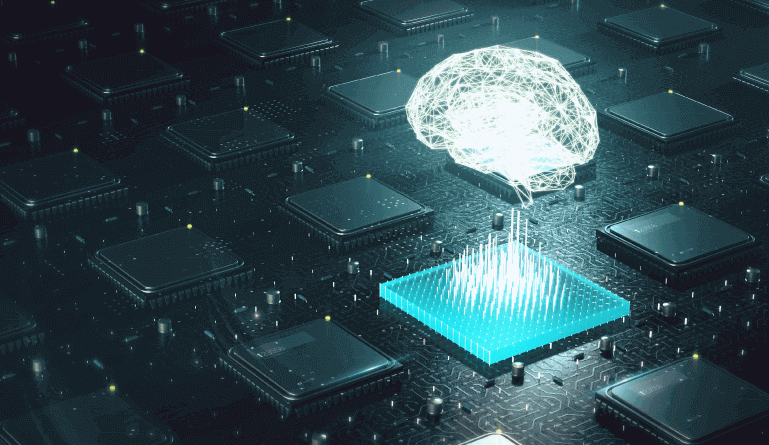In the last few months, you may have seen people in your network use AI to produce and share original works of art. You may have even observed aesthetically altered selfies that mirror the Renaissance style of art or incorporate surrealist scenarios. This technology that has now gone “viral” is called generative artificial intelligence.
To the end-user, generative AI appears to be almost magical – it is a miracle how a web app can furnish 100% original responses to unique human inputs, ranging from a series of words to be visualized to writing scripts! This “Christmas miracle” of sorts occurs because the technology black-boxes its inner working (which relies on heavy-duty data crunching and sophisticated analyses) and presents only the end results.
On the occasion of this holiday season, we are unpacking the AI innovation that’s regularly made headlines: generative AI. What powers the magic of generative AI? Let us decode this fascinating technology.
What is Generative AI? Definition and Meaning
Generative AI (Gen-AI) is a form of AI that generates new material, such as literature, graphics, and music. These systems are built on massive datasets and produce fresh material comparable to the training examples using machine learning techniques.
It generally relates to unattended and semi-attended machine learning methods that allow computers to leverage existing data like words, videos and audio files, pictures, or even code to generate new content. The objective is to produce totally unique artifacts that would seem authentic.
As per Gartner, generative AI is expected to change, among other things, digital product development. It will increase the quality, performance, and accessibility of digital products while reducing their time to market. This is among the many commercial benefits of generative AI, apart from its sheer magical quality. Technology is particularly important in creative fields like marketing and design, including industrial disciplines like architecture.
How Does Generative AI Work?
The term generative AI is used to describe any form of artificial intelligence which creates fresh digital imagery, video, audio, text, or code utilizing unsupervised learning methods. Its inner working can vary from one solution to another. That said, there are a few common facts about the magic of gen-AI, no matter how it is packaged.
First, it differs from discriminatory AI, which makes classifications between inputs, which is what is meant by “discriminatory” in this case. The objective of a discriminating learning algorithm would be to make a judgment about incoming inputs based on what was learned during training. In contrast, a generative AI model’s goal is to create synthetic data.
During the training phase, a restricted number of parameters are provided to these AI models. Essentially, this strategy challenges the model to formulate its own judgments on the most significant characteristics of the training data.
Generative AI technology can be of three types:
- Generative Adversarial Networks or GANs: Technologies capable of generating visual or multimedia outputs from both image and language inputs.
- Transformer-based models: Technologies like Generative Pre-Trained (GPT) language models may leverage Internet-led data to generate textual material, such as website articles, press releases, and whitepapers.
- Variational auto-encoders: The encoder codes the inputs as a compressed code, while the decoder decompresses this code and reproduces the original information.
Generative AI (particularly GANs) is often semi-supervised in nature. Semi-supervised AI learning effectively uses labeled training examples for supervised learning alongside unlabeled training material for unsupervised learning. Using unlabeled data facilitates the development of systems that can create prediction models beyond the range of labeled data.
Despite the fact that generative AI is often linked to deep fakes, it is becoming an increasingly vital tool in automating repetitive procedures that are part of any creative exercise.
Where Can Generative AI Work its Magic? Top Use Cases
These are the most promising implementations of generative AI:
1. Image generation for illustrations
Using generative AI, individuals may convert words into visuals and produce realistic graphics based on a specified context, topic, or place. It is important to apply these graphic elements for strategic reasons, such as designing marketing campaign creatives.
2. Image-to-photo conversion
On the basis of a rudimentary picture or sketch, it is feasible to produce a realistic depiction. This has applications in map design, visualizing the results of X-rays, and much more. This particular generative AI use case is extremely important for the healthcare sector.
3. Image-to-image generation
It includes altering an image’s external characteristics, such as its color, material, or shape while keeping its essential properties. An example of this would be transforming a daylight photograph into a nocturnal one. This has applications in sectors like retail and video/image surveillance.
4. Music experience optimization
It is possible to utilize audio development technologies to produce fresh audio material for ads and other creative purposes. Generative AI can even produce short clips or audio snippets that improve music listening experiences on other platforms, such as social media or Spotify.
5. Text generation
In the marketing, gaming, and communications sectors, generative AI is often utilized to generate dialogues, headings, and ads. These capabilities may be used in real-time chat boxes with consumers or for the creation of product details, blogs, and social media materials.
6. Equipment design
Generative AI can generate machine components and subassemblies. It can optimize designs with materials efficiency, clarity, and manufacturing efficiency in mind. In some cases, the design can be fed into a 3D printing machine to obtain a part 100% automatically – ‘tis a miracle indeed!
7. Coding
Software development is yet another application of generative AI because of its ability to generate code without the need for human coding. Developing code is achievable for both professionals and non-technical individuals. In this approach, generative AI represents the next step in the evolution of no-code application development.
Will Generative AI Replace Human Workers?
Some people are worried about generative AI systems, particularly those that replicate human ingenuity by creating fictional narratives or art. This results in a broader discussion of the limitations of technology and its influence on human lives. People may see generative AI as a task-replacement tool, although such new technologies frequently include a human-in-the-loop (HITL) aspect. This might result in the development of new employment positions.
By 2030, AI will enhance the world economy by a projected $15.7 trillion, or 26%. Despite the fact that AI will automate certain industries, studies indicate that any employment losses caused by automation will likely be more than countered in the long term. This is due to the larger economic impacts these new technologies have made possible. Gartner suggests that in order to gain a competitive edge, businesses should use generative AI immediately by adjusting their workforce dynamics, business processes, and tools.
What Are the Challenges of Generative AI?
While generative AI can seem like a kind of Christmas miracle when you first use it, it does come with a few pitfalls of its own. The first challenge is that it is hard to control. Because generative AI is capable of self-learning, its behavior is difficult to regulate and anticipate. Frequently, the outcomes delivered fall well below – or far from – expectations.
In addition, for algorithms to accomplish tasks, an enormous quantity of training data is required. With limited training data, you will only receive repetitive and not entirely original results. Some applications raise concerns about the privacy of individual-level data and the ethical ramifications of artificial intelligence.
Currently, the hype around generative AI may be ubiquitous, making it hard to establish pragmatic expectations for business outcomes. This is the greatest challenge in the nearish term; examine the most current and popular AI frameworks to understand the exact scope and range of this emerging technology — and actually transform this “Christmas miracle” into measurable results!
Thanks for reading, and happy holidays!





